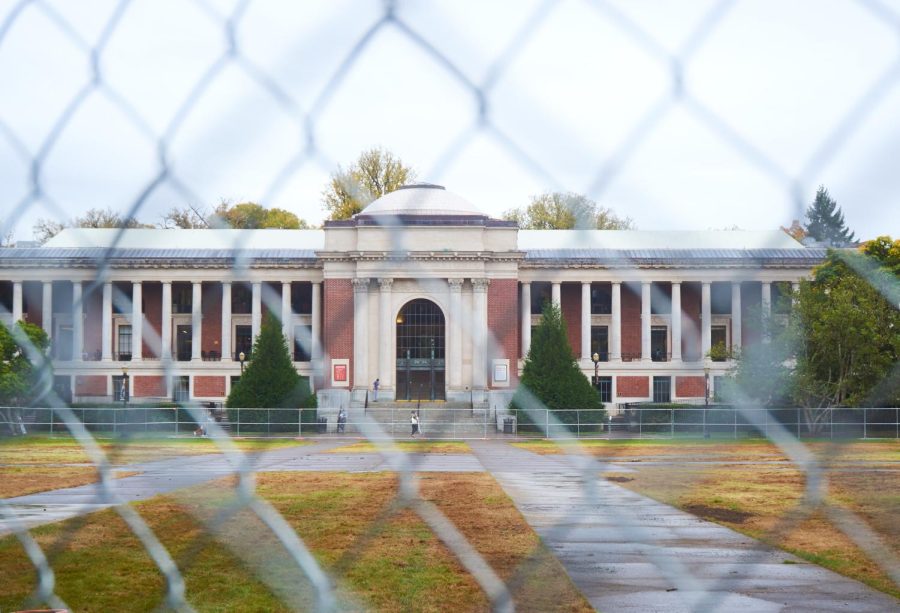How OSU handles its upkeep of historic buildings
Chain link fencing surrounding the Memorial Union quad on on Oct. 21. The construction in the MU quad and around Milam Hall has been a source of disruption to those traversing campus.
November 28, 2022
As you walk through campus, you might hear loud crashes and bangs of construction on Milam Hall, one of Oregon State University’s more historic buildings.
For some time now, Milam Hall’s roof has been deteriorating, allowing leaks from above to pour inside of the building. For students and faculty who work in these older buildings, these issues can get in the way of life.
For second-year food science graduate student Samuel Adler, one concern is the long-term reparations on the roof.
“The roof repairs on Milam seem to be taking quite a long time to get done. I believe it’s been at least six months now,” Adler said.
In addition, there are building needs such as heating issues and less secure locks inside the building.
“The main issue I have with Milam Hall is the heating,” Adler said. “Some rooms in the lower floors can become too hot in the winter, prompting people to open up windows to cool down. It is bothersome and wasteful.”
According to Adler, another antiquated issue is physical keys versus automatic locks which prove to be annoying to open, not to mention the lack of safety.
The question is how these repairs and issues in buildings on campus are managed, which turns the subject to the project management department at OSU.
“Milam Hall’s east wing was completed in 1913, the central building in 1920 and the west wing in 1952,” said Carrie Trant, the Project Coordinator at OSU. “As happens, and is expected on restoration projects of historic buildings, unforeseen conditions arise. Some surprises have come our way, which led to inconvenient and unsightly leaks.”
According to Trant, the construction on Milam Hall has been an endeavor of historic preservation including structural integrity enhancements, building maintenance and performance improvements.
As far as restoration of dilapidated buildings on campus is concerned, the OSU’s ten-year capital forecast is the university’s plan that analyzes buildings, landscapes, and infrastructure that supports OSU’s needs, according to Erin Martin, director of Communication and Web.
Each project is evaluated on four primary criteria: advancing OSU’s strategic plan, minimizing the impact on environmental and financial resources, cultivating a safer, more equitable, accessible and welcoming environment and leveraging funding, which is the ability to attract more funds for further projects.
“Funding comes from a variety of sources and is different for each project,” Martin said. “Some funding sources: donor gifts, OSU-backed bonds, state-issued bonds, capital renewal funds from the state or from education and general funds.”
The projects are reviewed and updated according to OSU’s chosen characteristics: comprehensive, consistent, consultative, transparent and efficient.
More buildings currently being worked on for renovations include Gilkey Hall and Graf Hall.
According to Trant, renovations for Milam Hall include new roofing systems which are currently being installed on all three of Milam Hall’s roofs, complete with roofing and attic insulation required by OSU construction standards and OSU energy initiatives.
Milam Hall is one example of out-of-date buildings on campus that is moving from dilapidation to restoration. It is predicted to be completed by winter term and filled with classes once again.












































































































